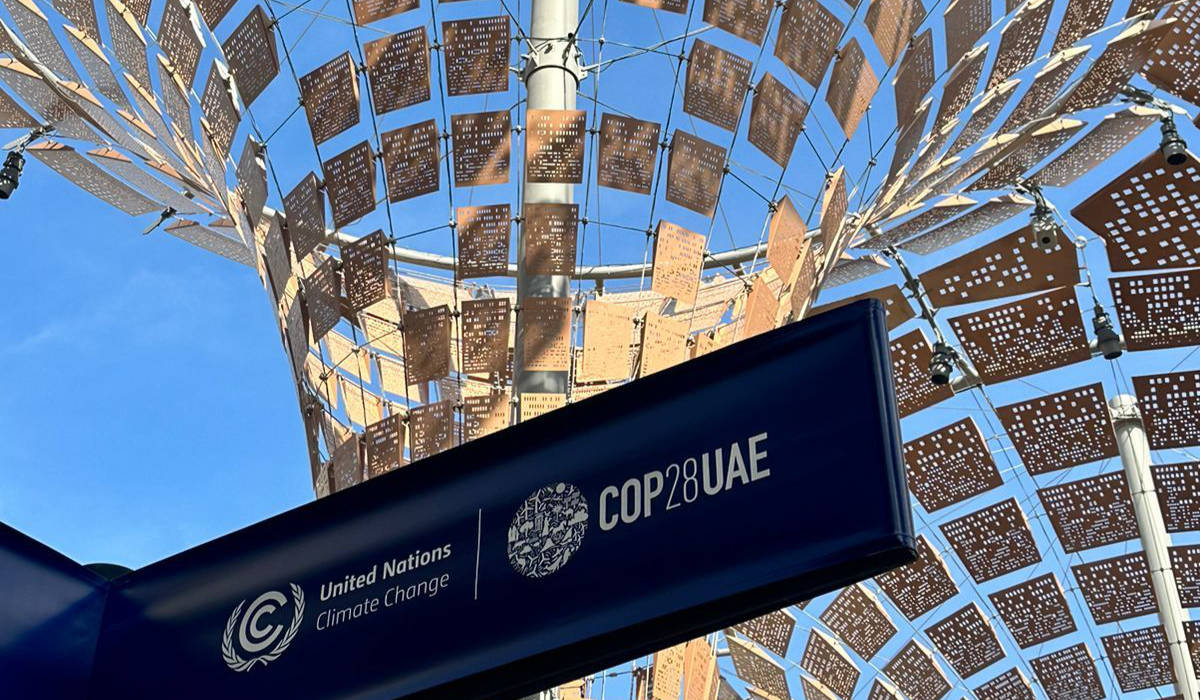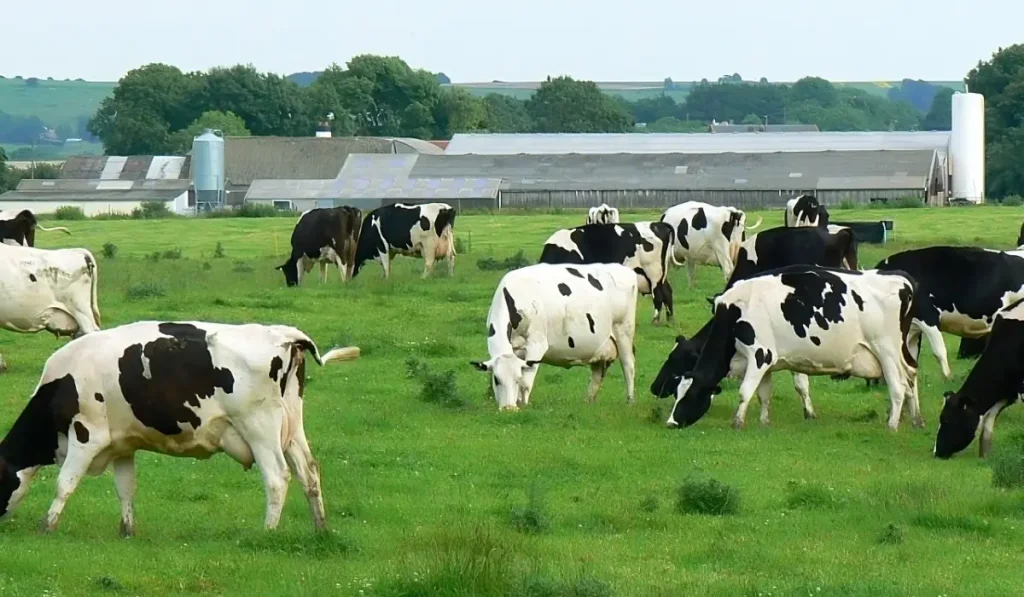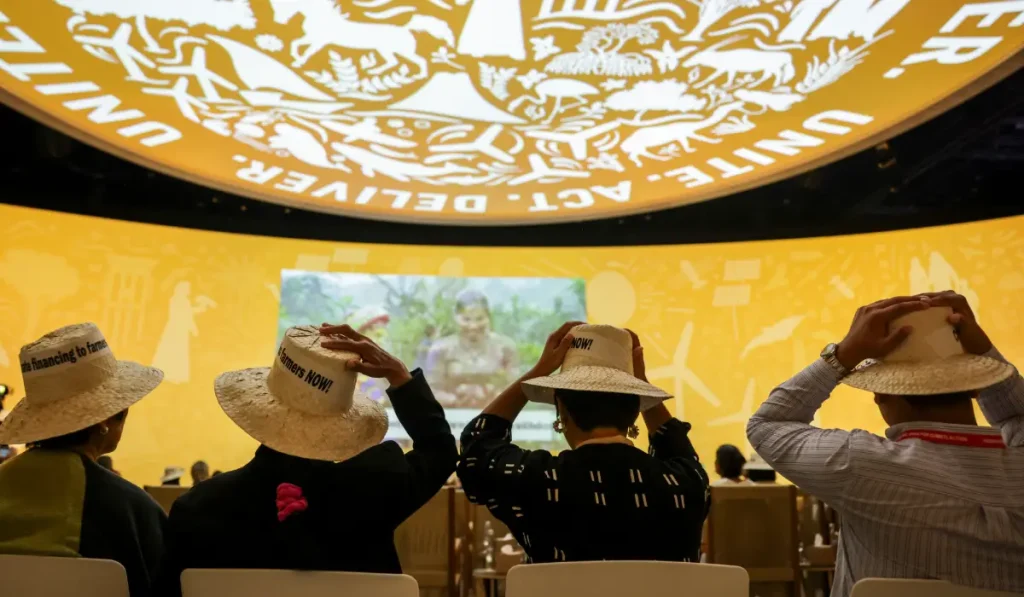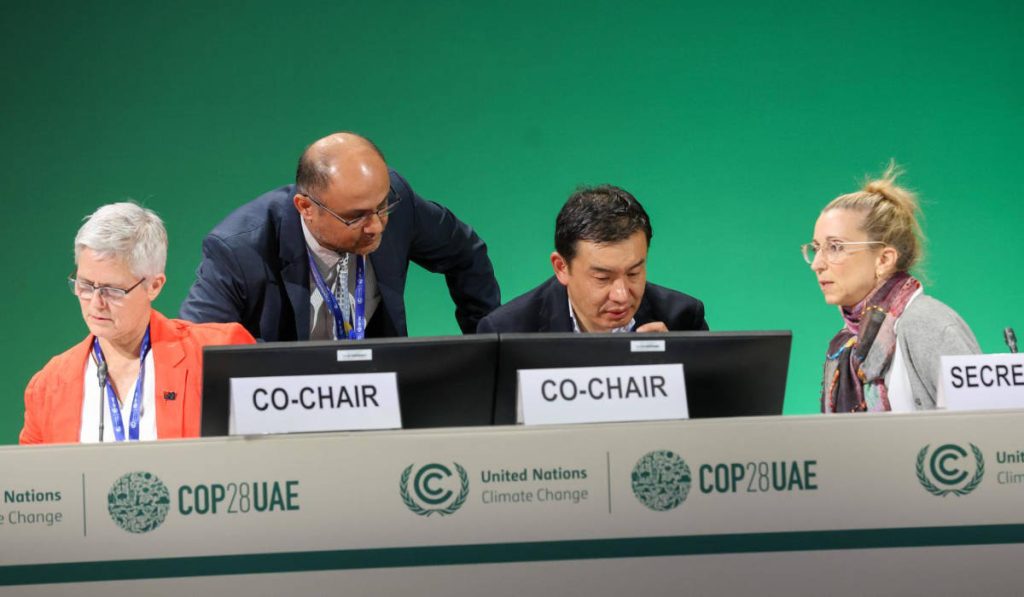Negotiations at COP28 led to key agreements for the Loss and Damage Fund, and some progress towards a shift away from fossil fuels. But it was also dominated by geopolitical tensions, the continued influence of fossil fuels and a failure to address gaps in adaptation. After all is said and done, was COP28 a step in the right direction for climate policy, finance and implementation? Or did it fail to live up to its promise?
As we emerge from another fraught COP, we undertake our own stocktake of where agreements were wrought and where further work still needs to be done, by picking up on the issues and themes in our Roadmap to COP28.
Adaptation has – and for the foreseeable future, will – continue to be the front and foremost priority of African countries at the COP. Mitigation and finance are tied to this as they both reduce Africa’s climate vulnerability, but progress on adaptation, in particular the Global Goal on Adaptation (GGA), was in the spotlight for negotiators this year. After a two-year gestation under the Glasgow-Sharm el Sheikh GGA work programme, countries were hard pressed this year to reach agreement on the GGA, as the programme came to an end. However, what emerged from the discussions was a heavily diluted text, with various weakly phrased thematic and process (“dimension”) related targets.
The GGA is important to African countries because not only does it support the monitoring and tracking of adaptation actions, but it also enables the capturing of adaptation needs, and supports the channelling of finance. For these reasons, African countries wanted to elevate adaptation action to have a similar goal to the temperature goal of the Paris Agreement, with an overarching target of enhancing adaptive capacity and resilience by at least 50% by 2030, and 90% by 2050. They had also proposed various time-bound and outcomes based thematic targets for water, health, ecosystems, food and agriculture, and the like. For example, a thematic target of reducing adverse climate impacts on agricultural production and productivity by 50% in 2030 and 100% by 2050. Similarly, they had proposed financial targets to achieve the GGA. But developed countries disagreed. Some suggested that the thematic targets were too difficult to measure and track, whilst others speculated that making them time-bound and outcomes based would have greater financial support consequences. In the end, what was agreed to were heavily watered down thematic targets that largely reiterate the general need for adaptation action across various thematic areas, which are neither time nor outcomes based. Finance was also dropped. What was agreed to is a series of process (or “dimension”) targets. For example, that by 2030 all countries have updated impact and vulnerability assessments as well as national adaptation plans. While having a GGA in place is certainly something to celebrate, its content is unfortunate, and African countries will need to work hard to ensure that they receive the requisite levels of support through other avenues such as the new finance goal that will be set next year.
COP28 also heralded the first Global Stocktake under the Paris Agreement. The Stocktake’s purpose is to assess collective progress in achieving the goals of the Agreement, which is to inform levels of ambition and action in subsequent rounds of NDCs. Much of the media attention at the COP this year was focused on whether there would be agreement to phase out fossil fuels in the Stocktake’s final text, and there was wrangling on whether there would be any mention of them at all, whether there would be a phase down (i.e., a reduction) or a complete phase out.
The day before the COP was due to end, a draft Stocktake text was released that no-one liked. Small island states called it a death warrant, and the EU thought it abysmal. Matters were complicated by a letter from OPEC Secretary General Haitham Al Ghais that urged members to oppose any deal that targeted fossil fuels.
African countries have always supported differentiated pathways, and that any phaseout must be applied equitably and lead to a just transition. In the lead up to the Stocktake, African countries highlighted the need for gas as a transition fuel, and that the Stocktake outcome should affirm differentiated pathways that targeted the phaseout of fossil fuels in developed countries well ahead of 2030, whilst affording developing countries the opportunity to close the global supply gap in the short term. Similarly, finance and energy poverty were always a critical part of the conversation. African countries are hard pressed to phase out fossil fuels and triple renewable energy capacity if they neither have affordable or accessible finance, nor the infrastructure and investment to do so. Linking these challenges to the achievement of ambitious targets was key.
The final Stocktake text, settled on the compromised language of “transitioning away from fossil fuels in energy systems, in a just, orderly and equitable manner, accelerating action in this critical decade, so as to achieve net zero by 2050 in keeping with the science”. The text also calls on countries to triple renewable energy and double energy efficiency by 2030, accelerate efforts to phase down unabated coal power, and accelerate efforts for “net-zero emission energy systems”. There is also a weak mention of “accelerating and substantially reducing” methane emissions by 2030. The text dropped any reference to a call to peak global emissions by 2025, but in a revised version recognised differentiated pathways for developed versus developing countries. For instance, it introduced a new text acknowledging that peaking of emissions would be shaped by domestic circumstances, levels of development as well as levels of financial, technical and capacity support. In this sense the final text is stronger on justice and equity than its predecessors. It also goes so far as to highlight historic failures by developed countries in meeting pre-2020 emission reduction pledges and gives special recognition to the principles of equity and common but differentiated responsibilities. In this sense African countries can be satisfied that the text is stronger on justice and equity principles.
On finance, the Stocktake text also affirms the adaptation finance needs of developing countries of $215–387 billion annually until 2030, and $4.3 trillion per year for clean energy for the same period. Although there is no commitment for this to be provided, it will certainly aid negotiations next year when parties discuss the post 2025 climate finance goal. However, the amount does draw the additional $3.5 billion pledged to the Green Climate Fund (GCF) into the pale. The GCF currently only sits with $12.5 billion.
The text also speaks directly to the concerns African countries have long harboured on the need for new and additional grant-based highly concessional finance, and non-debt instruments. The language used is quite forgiving of the historic failures of developed countries to deliver $100 billion of climate finance, and lack of progress in doubling adaptation finance. Parties are simply “urged” to fulfil their pledges in a timely manner, but there is no mention of the roadmap for the provision of finance or burden sharing agreement that African countries had asked for. Helpfully, it also acknowledges that more than just a doubling of adaptation finance is needed and that it will need to be significantly scaled up. In this sense, the text has a clear focus on the important role of public finance over private finance and at least quantifies the scale of the financial need.
African and other developing countries will also be pleased to see that it also underscores that Article 2(1)(c) of the Paris Agreement, sets the goal of making finance flows consistent with the Paris Agreement (often interpreted as a mandate to make “all” finance, including private finance flows consistent), is a separate issue to the obligation of developed countries to provide finance in Article 9. There have historically been concerns that reliance on the role of private finance was being used to dilute this obligation.
Furthermore, the Stocktake text also delves deeper into the reform of the multilateral financial architecture, focusing on the World Bank, central banks, commercial banks, institutional investors and other financial actors. On the side-lines, during Finance Day, a series of international financial institutions, committed to expanding climate-resilient debt clauses, which allow for debt to be paused allowing debt servicing to be paused for countries experiencing climate catastrophes. The World Bank also committed to increase its target for climate to 45% by 2025, unlocking an additional $9 billion a year, together with various other MDBs that announced new or expanded climate finance targets.
On Loss and Damage, COP28 kicked off on a high note, with agreement on the Loss and Damage Fund’s design and operationalisation. Whether the World Bank has the organisational culture to host the fund transitionally remains to be seen. Although the agreement that established the Fund unfortunately lacked any obligation for countries to contribute to it, initial pledges by the UAE and Germany meant that it could be swiftly operationalised. In doing so, the risk of the Fund being used as a political weapon to achieve other goals in the negotiations was put to bed early on. Overall, the Fund attracted approximately $700 million in pledges during the COP. However, this is still a long way off from the billions of dollars that vulnerable countries say is needed to respond to climate disasters. Going forward it will be important to ensure funding is new and additional (and not repackaged existing ODA), and that access procedures are simplified to make it fit for purpose.
On Just Transition Pathways, the divisions that beset the Bonn climate talks remained the same during the course of the negotiations. Developing countries want the dialogue on just transitions to have a wide scope, focusing not just on energy transitions or the labour force but also other transitions and broader societal implications. Developed countries want to keep it focused on the labour force and energy. This led to disputes around language. For instance, developing countries want to call it “just transition pathways”, while developed countries support “pathways to just transition.” There is a feeling that one version emphasises “justness” more than others and has a different scope. There was also disagreement between the balance of international vs national actions. Developing countries wanted the dialogue to speak to the multilateral process, whereas developed countries feel it is more of a national one. The final text compromises on discussing “just transition pathways to achieving the goals of the Paris Agreement”, using various permutations of references to just transitions and pathways. It also expresses that the scope of the programme is wide enough to include adaptation, and extends to both national and international levels, with a focus on international cooperation. This means that the programme and related dialogues will continue using the relatively broader scope and understanding of just transitions that developing countries had hoped for.
In our pre-COP series, we expressed a concern that trade and issues such as the Carbon Border Adjustment Mechanism (CBAM) wouldn’t even make it to the negotiation table this year. This followed ongoing wranglings within a body called the Forum and the Katowice Committee on Impacts (KCI) tasked with dialogue on mitigation “response measures”, including unilateral trade measures. Although the KCI discussions remained fraught, the Stocktake brought the issue to light by recognizing that “unilateral climate related measures should not constitute a means of arbitrary or unjustifiable discrimination or a disguised restriction on international trade.” Within the KCI, developing countries had hoped to reach agreement on the need for assessments and analyses of the impacts of “climate change related unilateral measures with cross-border impacts measures”, and a discussion on how to reduce negative impacts. The US and EU said the decision should be deferred to the Bonn climate talks next year. What came out in the final text is delicately phrased language that avoids any mention of the word trade, but rather calls for countries to consider the “impacts of response measures on people in vulnerable situations” when they design their climate policies, and for further research by the KCI on such potential or actual impacts. Read together with the Global Stocktake, going forward developing countries can start to make a case that this research should include research on unilateral measures such as the CBAM and potentially domestic green manufacturing incentive programmes.
At the end, the outcome of the COP allowed each of the delegations to go home with a win. For African countries this came in the form of strong recognition of the principles of equity and differentiated pathways, recognition of the integral connection between finance and ambition, and the need for scaled up public finance, particularly for adaptation. A Loss and Damage Fund was also established and given sufficient capital to become operational. Equally, however flawed, a GGA was agreed on, which will help accelerate adaptation planning, action, monitoring and finance. Moreover, we might even see more meaningful discussions and research on climate change and trade coming out of the UNFCCC.
Next year brings us a COP in another petrostate, Azerbaijan, and we can continue to expect the fraught geopolitics that beset this COP to continue. But as many delegates pointed out, we now firmly have the word “fossil fuels” within the lexicon of the COP text, and new mechanisms chartered to give effect to the Stocktake’s recommendations. In the meantime, we will continue to unpack the outcome of the COP in the coming months, including in relation to Article 6 and carbon credits, agriculture and food systems and adaptation. For those who went to the COP, we wish you a well-deserved break, and invite you to share with us any insights or thoughts you may have on its outcomes.

